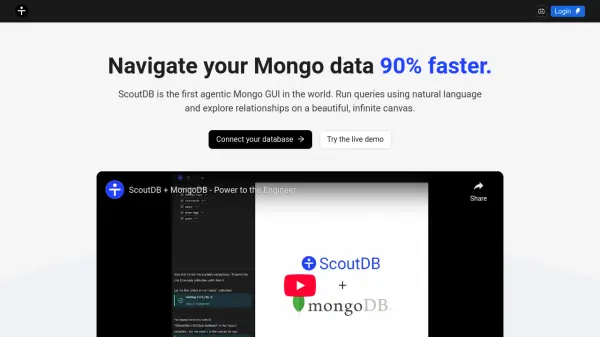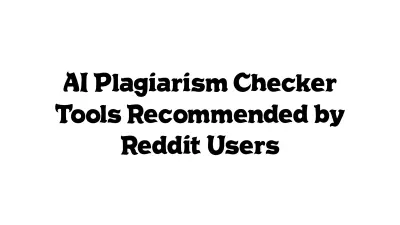What is ScoutDB?
ScoutDB is an advanced agentic Mongo GUI powered by artificial intelligence, designed to streamline the navigation and analysis of MongoDB databases. Users can interact with their data by simply describing their needs in plain English, as the platform employs AI to automatically translate these requests into precise, executable queries. This eliminates the need for users to memorize complex query syntax or detailed collection structures.
Beyond basic querying, ScoutDB uses AI to intuitively map out relationships across collections and present these connections on a dynamic, infinite canvas. This visual interface enables users to seamlessly navigate from one data point to another, such as tracing user records to posts, comments, and related logs, enhancing data exploration and analysis efficiency.
Features
- Natural Language Querying: Run database queries using plain English descriptions.
- Automated Schema Mapping: AI automatically discovers and maps relationships between your collections.
- Infinite Visual Canvas: Interactively explore your data with an expandable, graphical interface.
Use Cases
- Quickly retrieving complex data relationships from MongoDB without writing queries.
- Database administrators visually mapping and exploring collection structures.
- Developers streamlining debugging by tracing errors through related data in real time.
- Data analysts exploring user activities and linked content efficiently.
FAQs
-
How does ScoutDB let users run queries?
ScoutDB allows users to input queries using plain English, which the AI translates into accurate MongoDB queries for data retrieval. -
What is unique about ScoutDB's visualization?
ScoutDB offers an infinite, navigable canvas that visually represents relationships between data collections, enabling deeper and more intuitive exploration. -
Does ScoutDB automatically identify data relationships?
Yes, AI within ScoutDB autonomously maps and understands relationships between collections, even if those relationships are not explicitly defined in the schema.
Related Queries
Helpful for people in the following professions
ScoutDB Uptime Monitor
Average Uptime
99.58%
Average Response Time
1166 ms
Featured Tools
Join Our Newsletter
Stay updated with the latest AI tools, news, and offers by subscribing to our weekly newsletter.











